We got going at 8:00am, a little late for Pataslu. The mayhem on the road hadn’t started yet with the roadside vendors just setting up for another big day. We walked from our hotel, Sky One Ski Resort, up the road to Solang, wound our way through the buried houses, trash, yak and donkey dung, past Hotel Iceland (literally named) down to the banks of the Beas River. I should mention here that we’ve been using the invaluable guide book from CR Spooner, who is apparently quite the hard man, having logged many chilly nights in the rugged conditions of this part of the Himalaya. The guide book is nearly 20 years old, so it’s a little out of date with some of the logistics, but spot on with the touring information. It’s still available as an e-book.

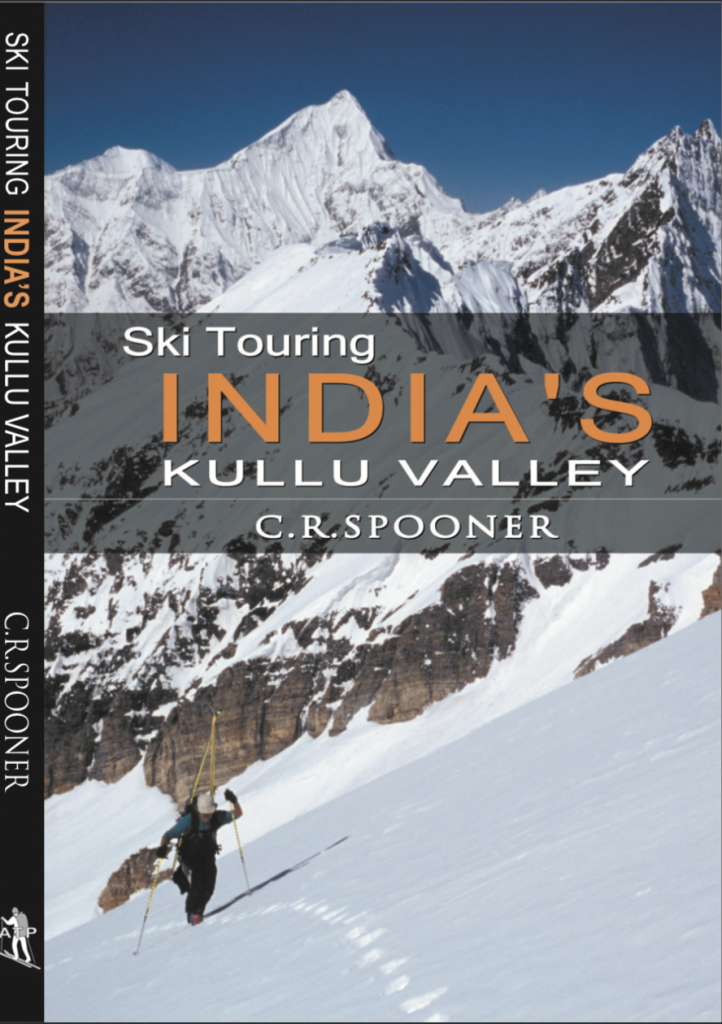
From Beas, we wound our way up through the largest avalanche debris pile I have ever seen. There were blocks of mud and snow the size cars stacked 50 ft high.
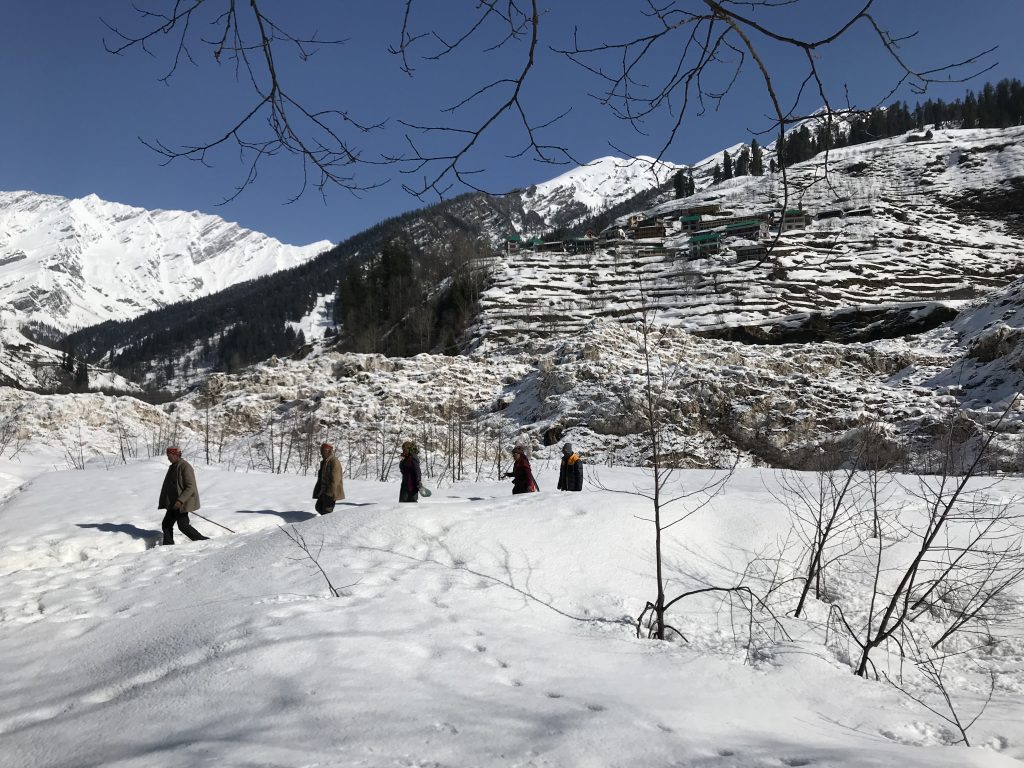
Traveling down the Himalyan debris pile were the stout inhabitants of Old Solang, a settlement perched on the south facing terraced hillside above us. I think they were going to work, likely to sell roasted corn, or peddle boots for rent. Some of the women were shopping in Solang for groceries, as we saw them coming back with potatoes and other victuals. Booting through the postholes in Old Solang was an interesting glimpse into the lives of these people. Many of the homes were completely open to the elements. Donkeys and mules were fenced in (or not) in front of some of the hovels. Not completely unexpected, but nonetheless stark, was the use of cell phones by some of the villagers who were chatting away as they made their daily trek down through the debris pile. I also noted Tata satellite dishes (like Indian Direct TV) mounted on some of the homes.
Once we past Old Solang, my years of experience and and mountain saavy began to show. I realized I had forgotten both of my water bottles! Luckily Timbo had two Nalgenes and I had brought the Steripen. We split one of the Nalgenes then filled up at a stream above the villages, upstream of the livestock and whatever else was being washed down from Old Solang.
Now we were skining and the fun part of the tour began. We wound our way north up the expansive southern shoulder of Pataslu, through what must be summer grazing lands for the livestock as there was a buried electrified fence visible in some places. The open fields gave way to a forest of conifers and Himalayan oak. Above that we made our way to our set of waypoints that I had programmed into the GPS the night before during my daily 12:30am nighttime jet lag wakeup.
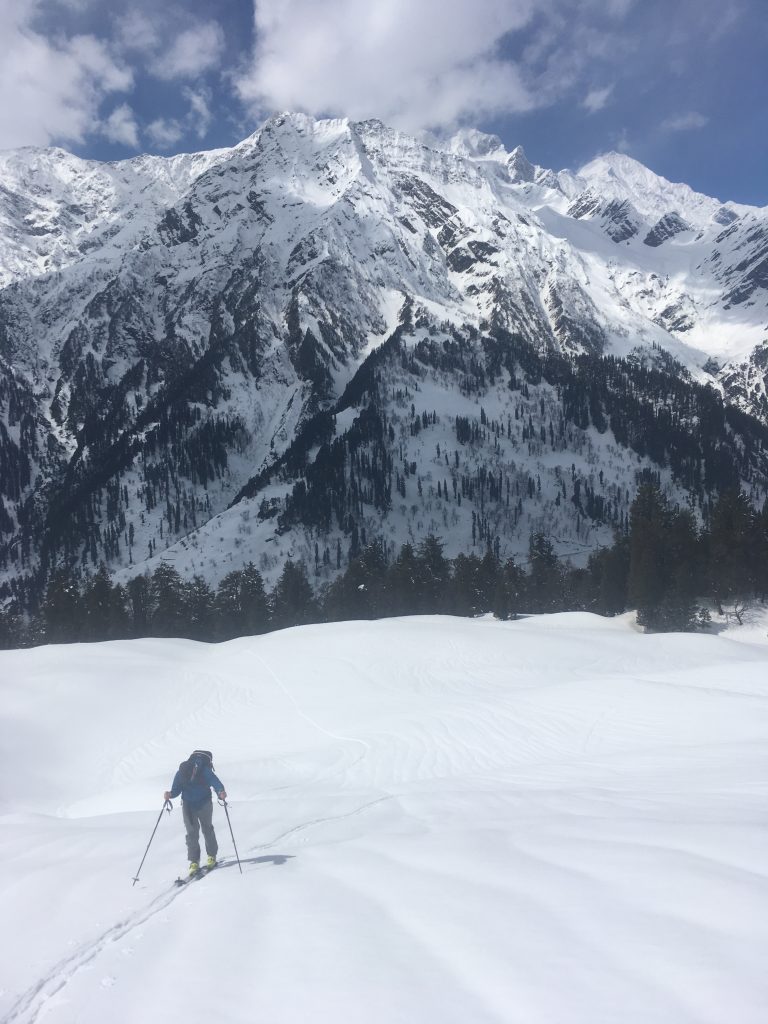
Based on the Spooner book, I expected a continental snowpack, maybe 1-2m. The location we choose for the snow pit was 3.2 m, requiring a staircase the get to the bottom. We grunted and shoveled under the intense March sun for at least an hour, eventually reaching the bottom so that we could begin our density sampling.
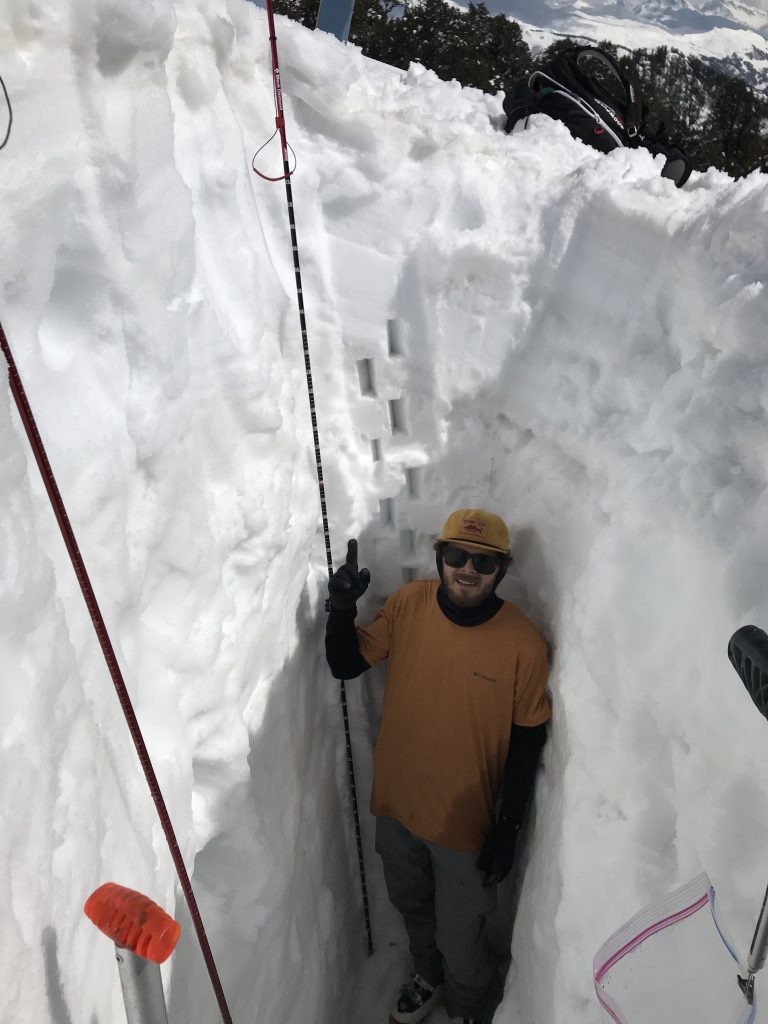
Once the pit was finished, we spent the next few hours trudging around in the gloppy new snow, making depth measurements at the waypoints. The ski down did not have us “hooting with delight” per the Spooner book, but rather trying to avoid blowing out our knees in the cooked snow. Whatever. The solace from the zoo down below in Solang was invigorating, and almost made the 30+ hr of travel from California worth it.
Coming down through Old Solang we got some good pics with the donkeys and local kids
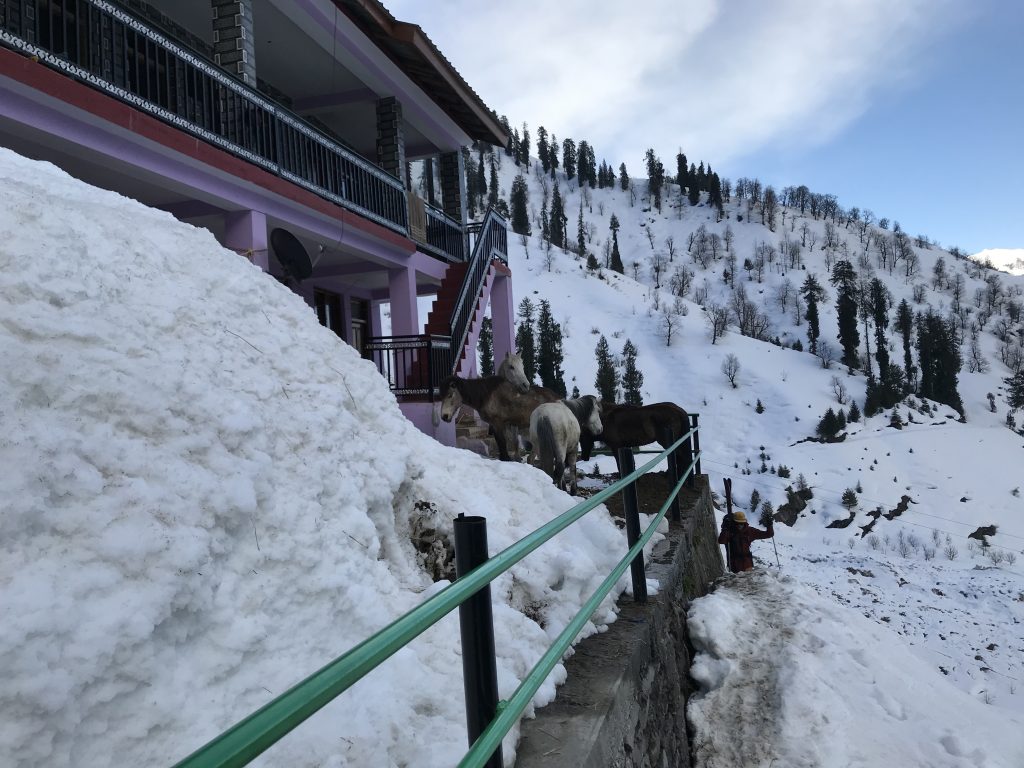
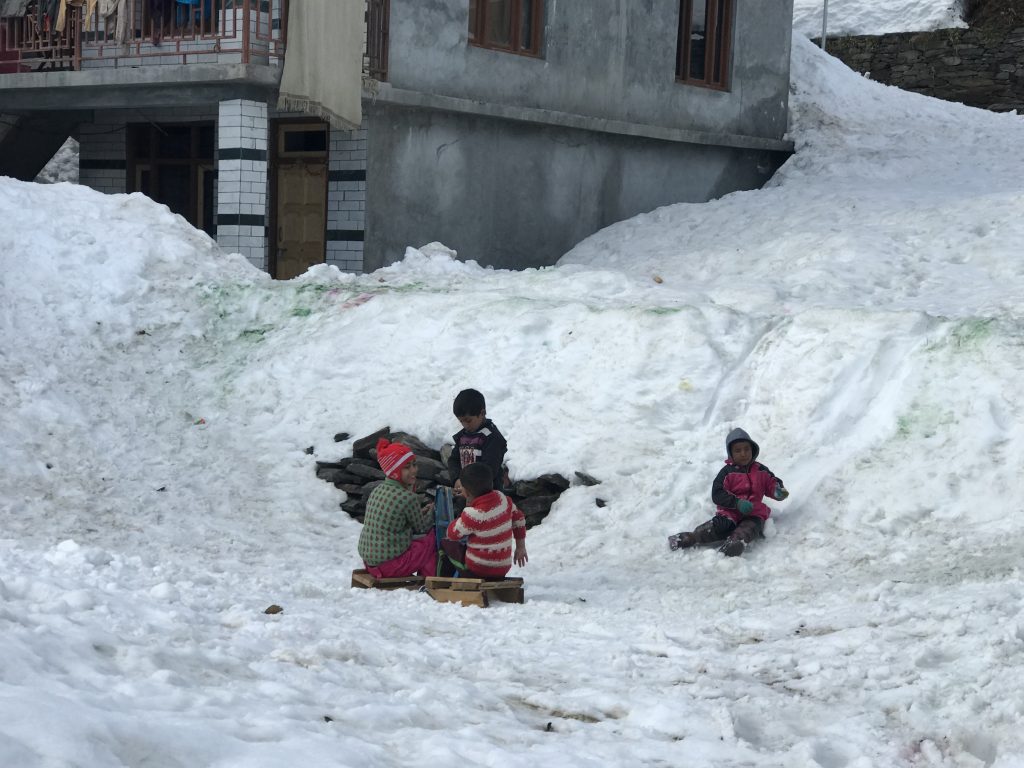
Pingback: Once more into the breach, March 26 2019 | Snow research and CUES